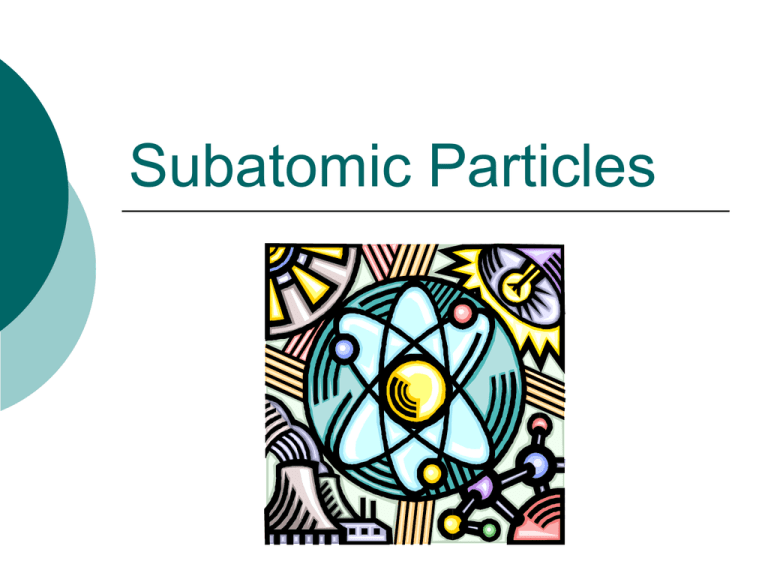Notes: Subatomic Particles
advertisement

Subatomic Particles Using the Periodic Table Atomic Number Mass Number N 14.0067 7 Symbol Atomic Number The number of protons in the nucleus Every element on the Periodic Table has an unique atomic number Determine the number of PROTONS in each: 1. 2. 3. 4. 5. Na O Br Zn H 1. 11 protons 2. 8 protons 3. 35 protons 4. 30 protons 5. 1 proton Mass Number The number of protons and neutrons (you need to round the decimal number first) To find the number of neutrons: Mass Number - # of protons From the atomic number Determine the # of protons and neutrons for each of the following: 1. H 2. Cl 1. 2. 3. Mg 3. 4. Ca 4. 5. I 5. 1 proton and 0 neutron 17 protons and 18 neutrons 12 protons and 12 neutrons 20 protons and 20 neutrons 53 protons and 74 neutrons Charge of an atom Atoms overall charge is always zero (they are neutral) To achieve this, the positively charged protons must be equal to the negatively charged electrons P+E=0 for all atoms Determine the number of protons, neutrons, and electrons in each: 1. K 2. Mn 3. P 4. Al 5. H 1. 19p, 19e, 20n 2. 25p, 25e, 30n 3. 15p, 15e, 16n 4. 13p, 13e, 14n 5. 1p, 1e, 0n Ions What atoms turn into when they gain or lose electrons To find the charge on an ion, compare the # of protons to the # of electrons Example of an Ion Find the number of protons and electrons in a neutral Mg atom: 12 protons and 12 electrons If Mg loses 2 electrons, what will happen to its charge? (+12) + (-10) = +2 Final answer: Mg+2 The Complete Chemical Symbol Mass Number (rounded) 16 8 Atomic Number -2 Charge



